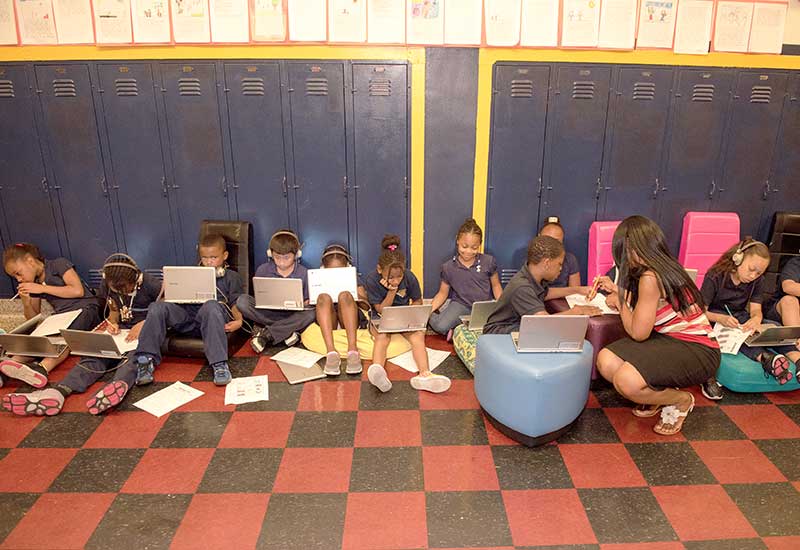Context
Lovett students learn in a traditional school building. In order to provide for more personalized learning opportunities, Lovett needed to get creative with the space it had. By rethinking their approach to furniture and learning spaces, Lovett created a flexible learning environment that better meets the needs of its students. This allows students to work in areas where they are comfortable, and for students to create environments that foster collaboration.
To create this environment, Lovett focused on two main areas: the classroom and the hallway. They purchased furniture specifically for hallways, such as mini-bleachers, small whiteboards, and reclining chairs. They also purchased new types of classroom furniture, including seating mats and couches. Students have access to this flexible furniture, such as bean bag and rocking chairs, that they can move around. Lovett created a use system for this moveable furniture to ensure that it did not become a distraction.
This approach is illustrative of LEAP's Learner Led Strategies.

Student Does
- Chooses where they want to work based on their trust level behavior chart in class.
Takes responsibility for returning any furniture they may have moved, especially furniture removed from the classroom, by the end of class.
Moves across hallways to their assigned teacher and class.
Teacher Does
- Creates a color-coded trust system for students: Students who show they can make good choices can work wherever they want (green). Students who aren’t making good choices are assigned a work location (red). Students earning back trust can choose a work location only within the classroom (yellow).
Displays student names on trust board within the classroom, so students know what choice they have in their learning area for each day.
Enables students to improve their trust level each day by demonstrating responsibility and good decision-making.
Ensures students working out of their sight are completing their work by checking their progress tracker.
Strategy Resources
Lovett Student Tracker Sheet
This is an example of a "tracker sheet" that Lovett educators and students use to... Learn More

Evidence
Flexible furnishing allows for classroom spaces to support multiple learning goals, and provides avenues for increasing student choice and motivation. Students’ self-regulation, emotion, engagement and attention can all be improved through choice and flexibility in their learning environment.
Learn more about the evidence that supports Mobility & Flexibility at Digital Promise Global's Learner Positioning System.
